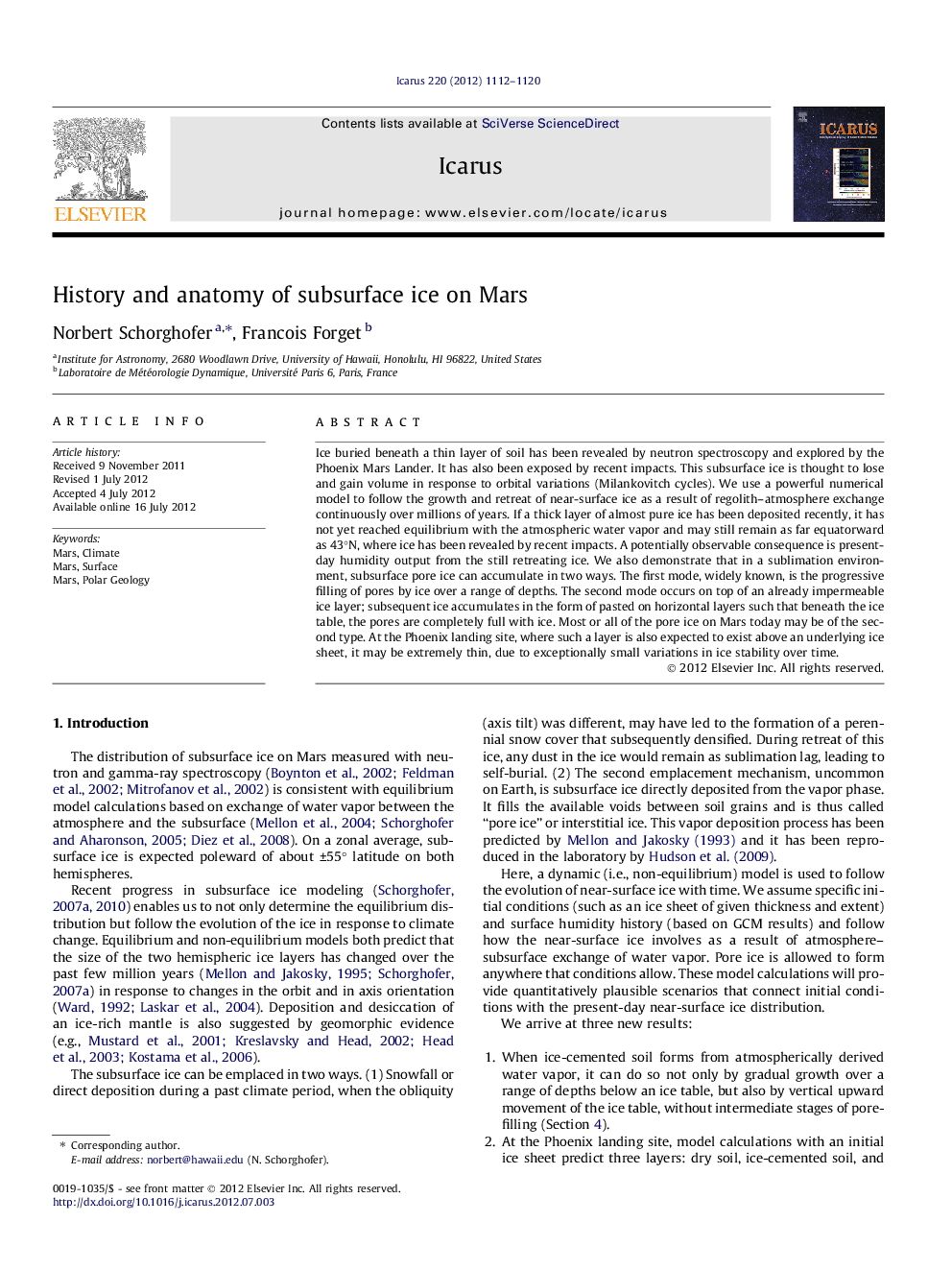| Article ID | Journal | Published Year | Pages | File Type |
|---|---|---|---|---|
| 1773467 | Icarus | 2012 | 9 Pages |
Ice buried beneath a thin layer of soil has been revealed by neutron spectroscopy and explored by the Phoenix Mars Lander. It has also been exposed by recent impacts. This subsurface ice is thought to lose and gain volume in response to orbital variations (Milankovitch cycles). We use a powerful numerical model to follow the growth and retreat of near-surface ice as a result of regolith–atmosphere exchange continuously over millions of years. If a thick layer of almost pure ice has been deposited recently, it has not yet reached equilibrium with the atmospheric water vapor and may still remain as far equatorward as 43°N, where ice has been revealed by recent impacts. A potentially observable consequence is present-day humidity output from the still retreating ice. We also demonstrate that in a sublimation environment, subsurface pore ice can accumulate in two ways. The first mode, widely known, is the progressive filling of pores by ice over a range of depths. The second mode occurs on top of an already impermeable ice layer; subsequent ice accumulates in the form of pasted on horizontal layers such that beneath the ice table, the pores are completely full with ice. Most or all of the pore ice on Mars today may be of the second type. At the Phoenix landing site, where such a layer is also expected to exist above an underlying ice sheet, it may be extremely thin, due to exceptionally small variations in ice stability over time.
► Model calculations are carried out for retreat and formation of high-latitude ice. ► The pore-ice at the Phoenix landing site may be thin and underlain by massive ice. ► A second mode for subsurface ice accumulation is identified. ► A recent thick ice sheet that is still retreating can explain ice-exposing impacts.
